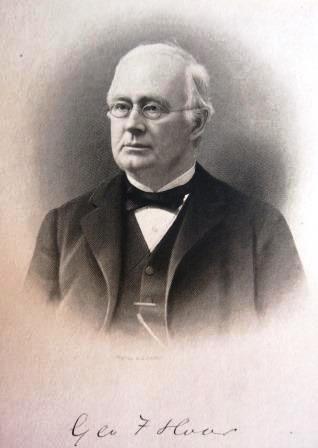By Daniel Tobias Hinchen, Reader Services
We here in the Library Reader Services department at the MHS concern ourselves with the user/researcher side of our collections. This job allows us to continually sharpen the skills of reference librarians: catalog searching, materials handling, patron interactions, and the like. Unfortunately, this being a full-time job, there is a chance that some of our other library skills can atrophy. Thankfully, we occasionally get the opportunity to flex those other muscles by taking on projects in other areas.

Recently, I started a cataloging project in which I create bibliographic records for entry in our online catalog, ABIGAIL. The print material that I am cataloging all comes from the George Frisbie Hoar papers, a voluminous collection that contains a heady mix of manuscript material, printed matter, and even some images. This is a valuable project for me because it allows me to get a much better sense about some of the topics on which the collection is informative. It also results in a great deal more description for a researcher about what is contained in the collection, at least as far as the printed matter is concerned.
Much of the project consists of copy-cataloging. That is, using catalog information already created by other institutions and made available via the Online Computer Library Center, or OCLC. This method of cataloging saves us from recreating the wheel for every single object, though we still need to add information about the specific copy in our holdings. For instance, in every catalog record I create for ABIGAIL, I need to note that it is stored offsite with the rest of the collection, a note not needed by other libraries.
When there is no record freely available through OCLC, then original cataloging is required. This entails adding into a form all of the bibliographic data necessary for making the item discoverable by researchers. So, we had the basic stuff like author, title, and publisher (when known), but also things like subject headings which provide another means of discovery. When the project is finished, a researcher working on a project about currency will now be able to find several publications in the Hoar papers about bimetallism, for example.
The project is also well-timed as we are seeing a very dramatic upswing in requests for material from this collection. In the last twelve months there were over 170 requests for the collection! Not only are people very interested in the large amount of manuscript material – over 100 record cartons simply of correspondence – but also in the wealth of print material that Hoar collected. Most of this related to various topics with which Hoar and his congressional colleagues wrestled during the latter-half of the 19th century, some of which are gaining renewed relevance today: immigration, American imperialism, election laws and controversies, bankruptcy and anti-trust legislation, and Supreme Court matters, to name a few.
In the end, this project is a classic Win-Win-Win scenario: I get some practice using my cataloging skills, our cataloger has one less project to worry about, and the researcher gets better information about what we hold in our collections.
Interested in learning more about this collection? You can find an online collection guide to the George Frisbie Hoar papers on our website, then, learn about Visiting the Library.

